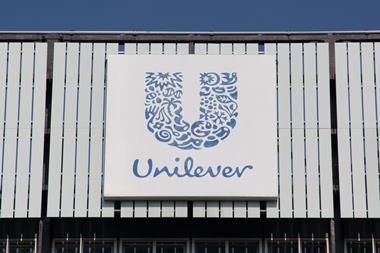The interim report on the grocery market is a mix of encouraging statements, frustrating oversights and worrying conclusions
I hope you have all enjoyed the 270 pages, plus appendices, offered as provisional findings by the Competition Commission on Wednesday. With every section, the description of this paper as a 'curate's egg' becomes ever more apt.
There are encouraging statements, worrying conclusions and frustrating oversights in equal measure. Add to this the spin put on the report by every party to the inquiry and other commentators besides - and coming to a balanced view isn't easy. But here's my take on the latest development.
The key findings were on planning and suppliers. We seem to be moving towards a view that competition should be a factor in determining which retailers should be allowed to build new stores in certain local markets. In many ways this is a logical extension of the practice of requiring the divestment of stores after acquisitions to ensure local choice.
This outcome is very different from the planning free-for-all forecast by some commentators. If competition is an additional factor to other planning tests - such as the 'need' test or its successor - then the remedy would hold few fears for convenience stores.
Read a bit deeper and the Commission reveals some worrying facts. For example, it admits the planning system acts in favour of existing national grocery retailers. So what about the independent operators, who (according to the Commission's own figures) haven't been able to build a single new large store in the past six years? If independents aren't able to grow a portfolio of large stores, who will be the competitors in the next generation? This issue is central to the Commission's brief and must be addressed.
On supplier issues, the Commission has placed the differential between buying prices paid by large and small retailers at 13% (wider than in 2000), but, reading more closely, it seems the range of buying prices stretches to well over 15%. Buying power clearly exists, to the detriment of suppliers and consumers. The question now is what to do about it.
Our biggest frustrations lie in the treatment of the c-store sector. Perhaps the person who believes the supermarket code of practice works is also the person who believes c-store numbers can be measured through a database that looks only at town centres. No-one - including, indeed, Experian itself - believes its Goad database is fit for this purpose. But the Commission persists in using it. Its latest confused act is to bring ONS data into the equation for the first time, 18 months into the inquiry. It's time for the Commission to return to the IGD figures used throughout the industry and to admit that overall
c-store numbers are declining.
Once we get this starting point right, many other assertions in the findings start to look wobbly. For example, how hard has the Commission looked for examples of below-cost selling? These rely on knowing superstore buying prices - something the Commission can and should insist on finding out.
Huge unanswered questions remain also on Tesco's vouchering campaigns. Tesco says they represent a tiny investment, yet Sainsbury's says Tesco spends more than the entire Sainsbury TV advertising budget on them. Who is right? And isn't the Commission concerned that it doesn't know?
The Commission has made some progress on planning and supplier issues. But there's still a lot to do and not much time to do it. n
James Lowman is chief executive, Association of Convenience Stores









No comments yet